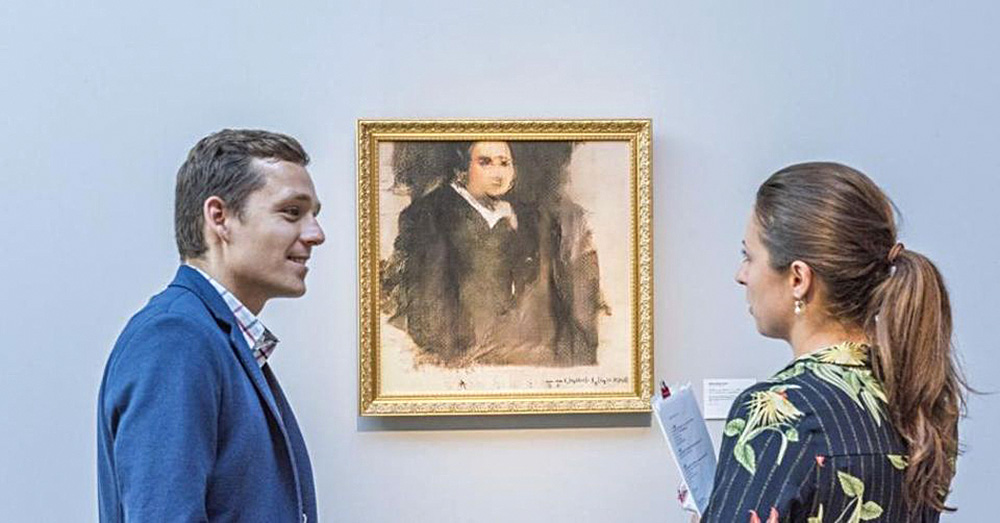The conflict around the artwork raises issues of who owns the copyright for AI-generated art
 Portrait of Edmond Belamy by the Obvious collective at Christie's. Photo: Christie's/The Art Newspaper
Portrait of Edmond Belamy by the Obvious collective at Christie's. Photo: Christie's/The Art Newspaper
Obvious turned out to be not an algorithm but an art group of Hugo Caselles-Dupré, Pierre Fautrel and Gauthier Vernier. The algorithm was developed by artist and programmer at Stanford University Robbie Barrat. The Obvious collective asked his permission to use the code to create artworks, but Barrat criticised the decision to sell Portrait of Edmond Belamy, according to the Art Newspaper.
Barrat says the idea was to democratise AI-generated art and Obvious’s work initially looked like an open source project. But a few weeks later he learnt the collective had put the artwork on sale and asked them not to do it. Barrat says he does not care about financial issues but thinks the collective should have credited him.
Obvious members do not deny they borrowed the code from Barrat, but say they used it legally in full compliance with the open source licence. The group explained the generative adversarial network (GAN), which was used to create the artwork, was developed by Ian Goodfellow. The name Belamy is a tribute to him – “bel ami” is a rough French translation of his name.
The auction, where the artwork was sold for $432.500, 45 times higher its estimated worth, and the following public discussion drew attention to the AI art community, which is traditionally open and collaborative, and copyright issues. Obvious don’t think they are the authors of Portrait of Edmond Belamy and credit the algorithm that generated the work.
After the sale, the discussion sparked if Obvious members should share the proceeds with Barrat. The art group is not going to do so: “The money will be used to finance the computation power needed to produce this type of artwork, and maybe attend next NIPS conference.”
Subscribe to our mailing list: